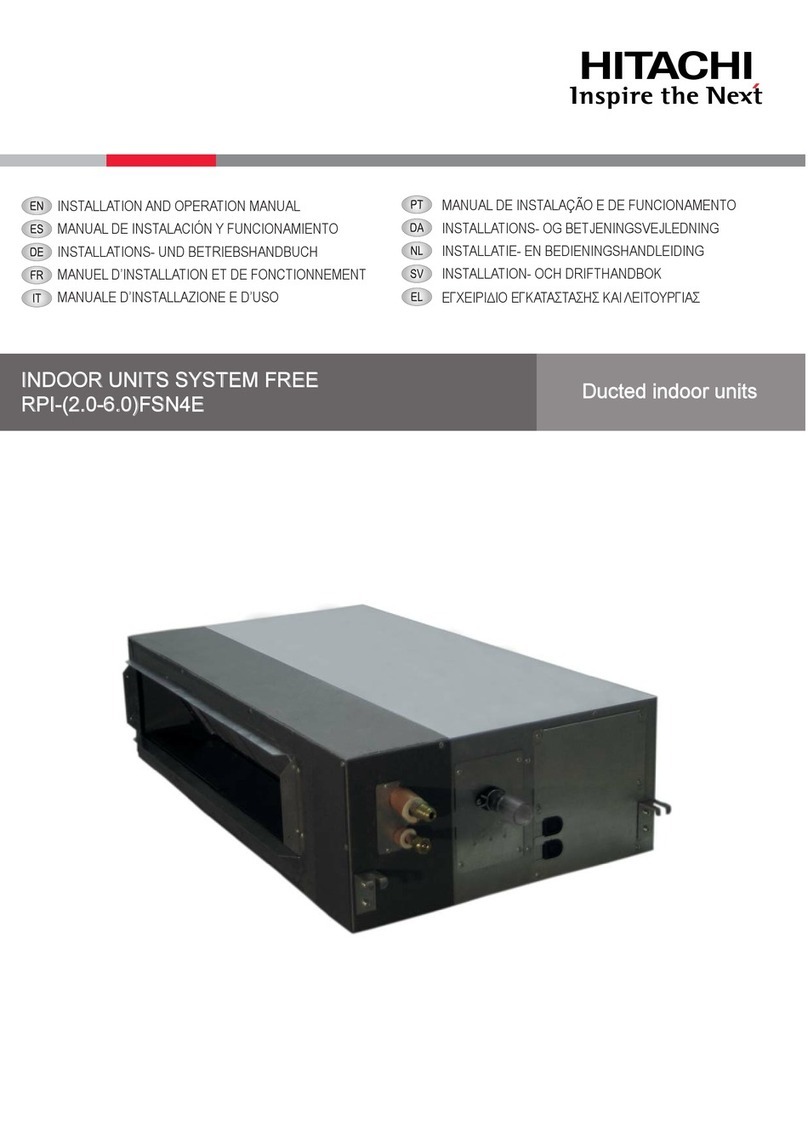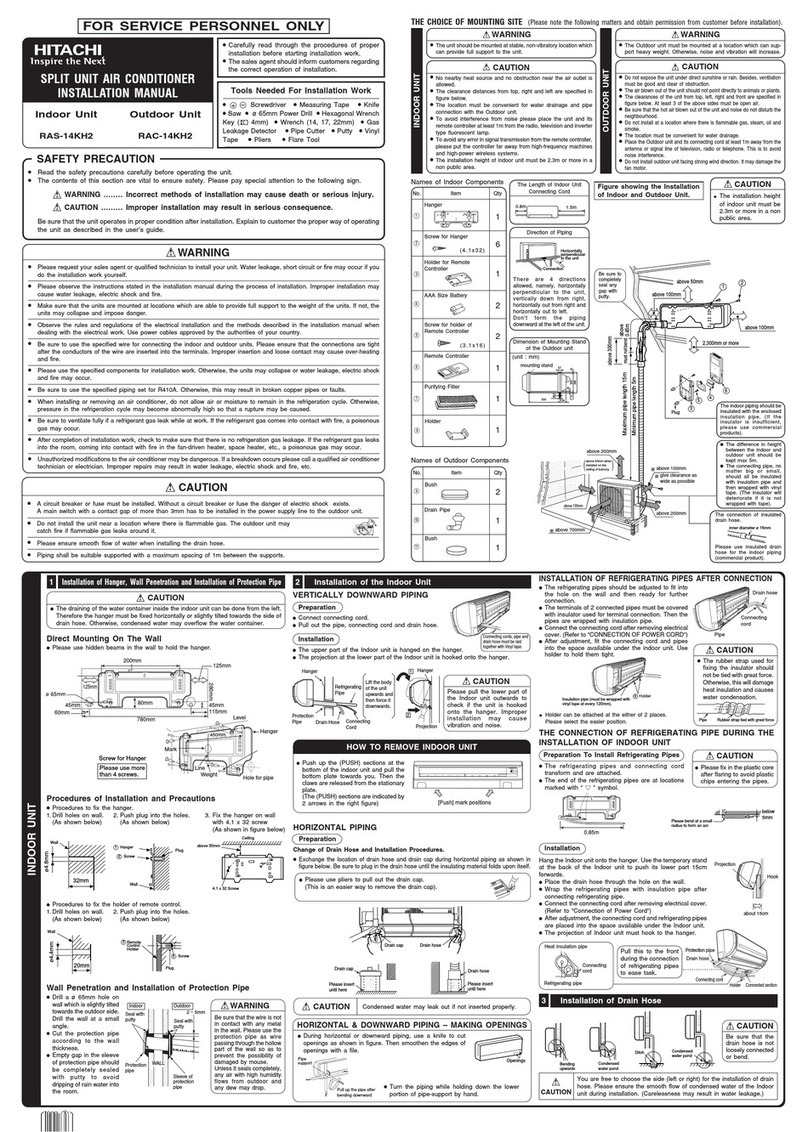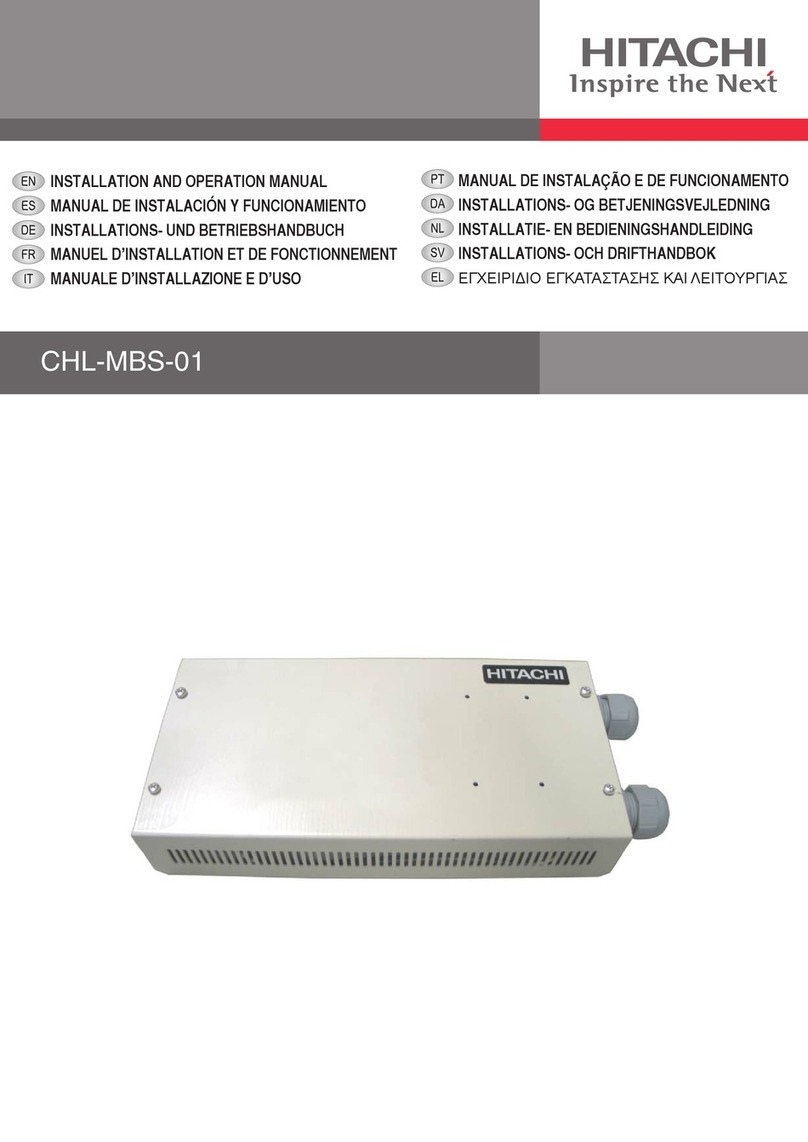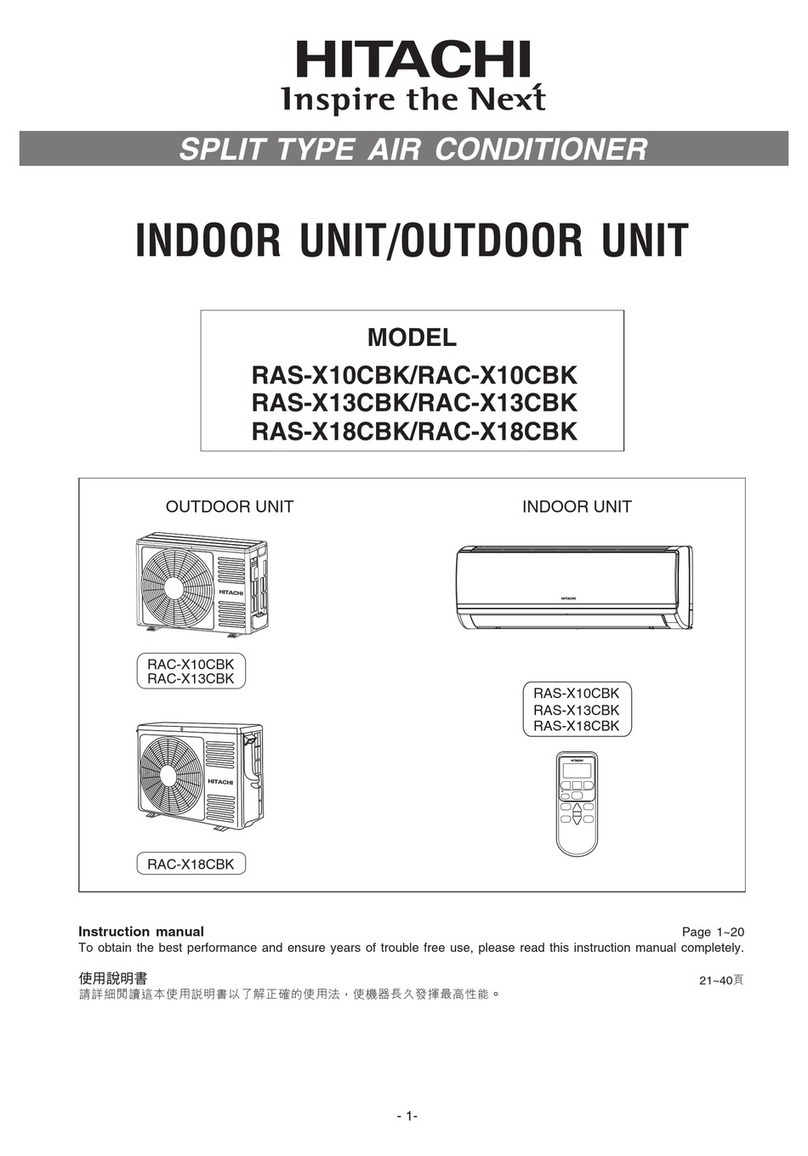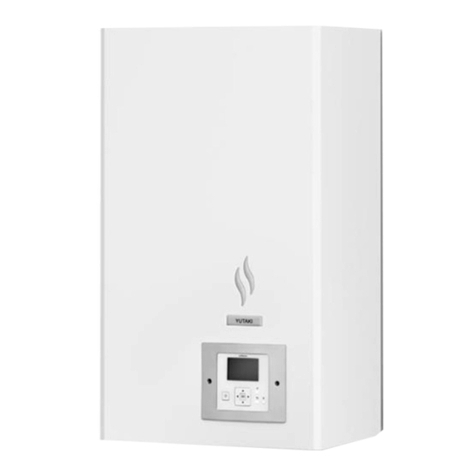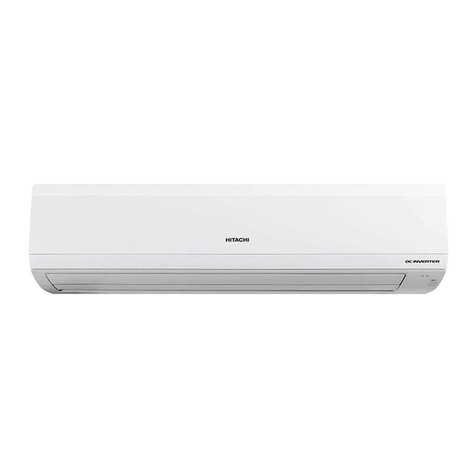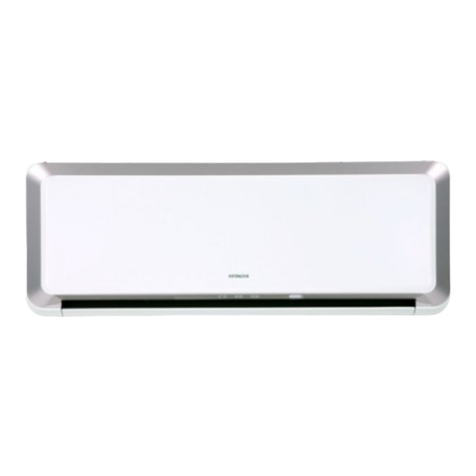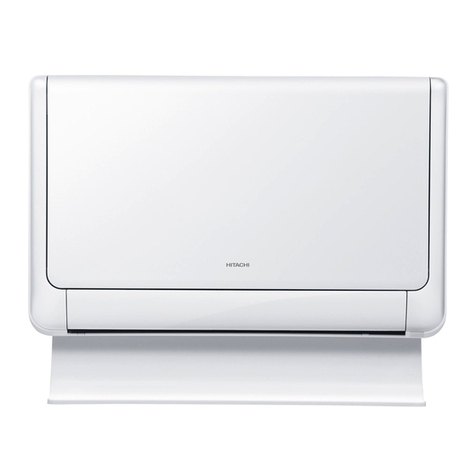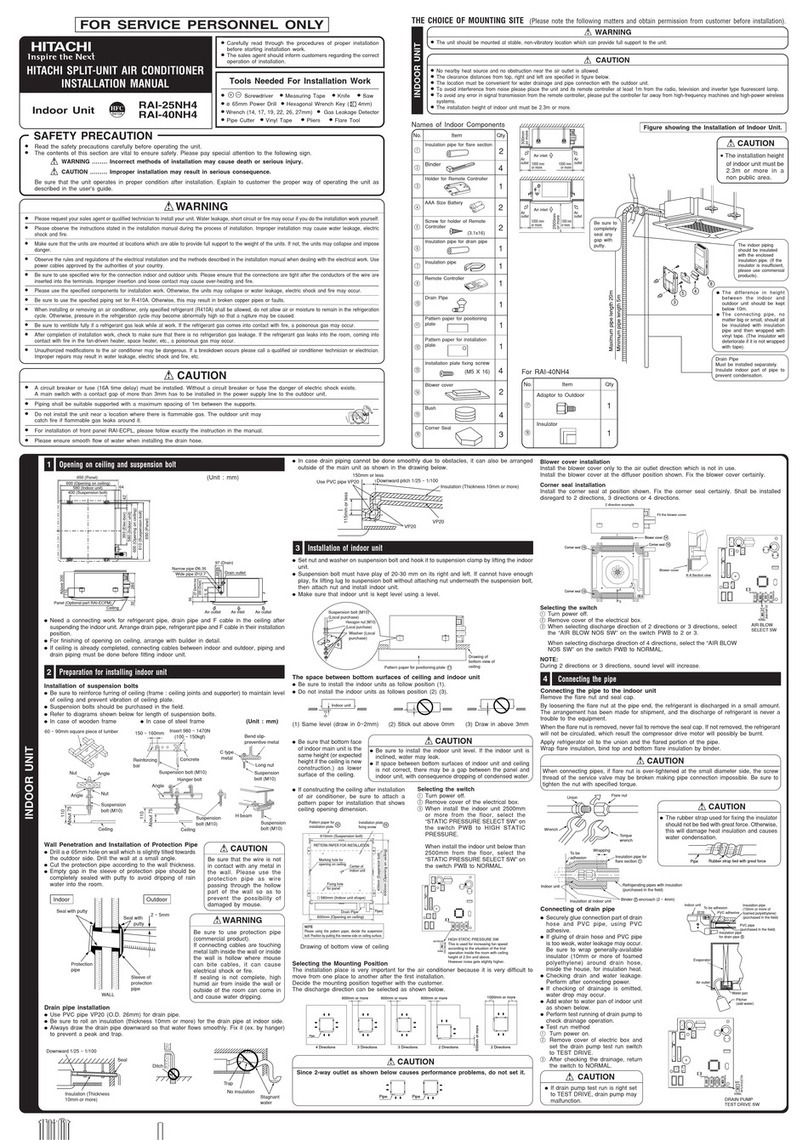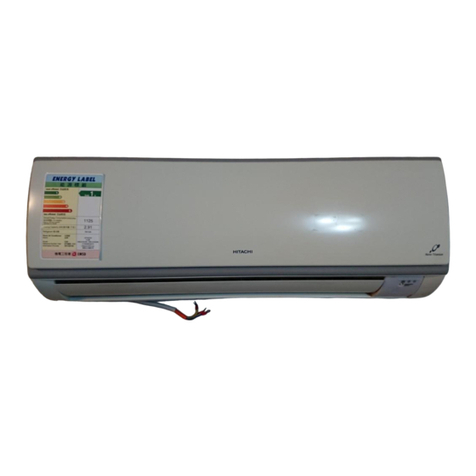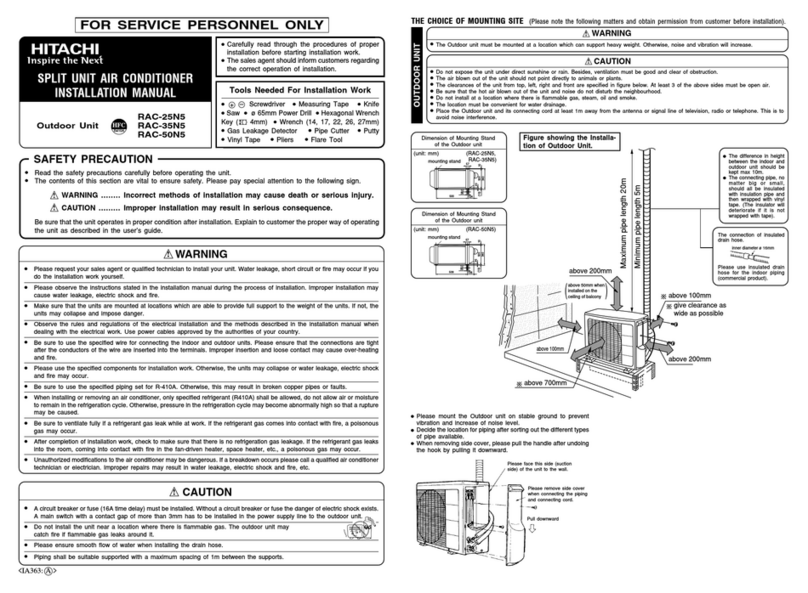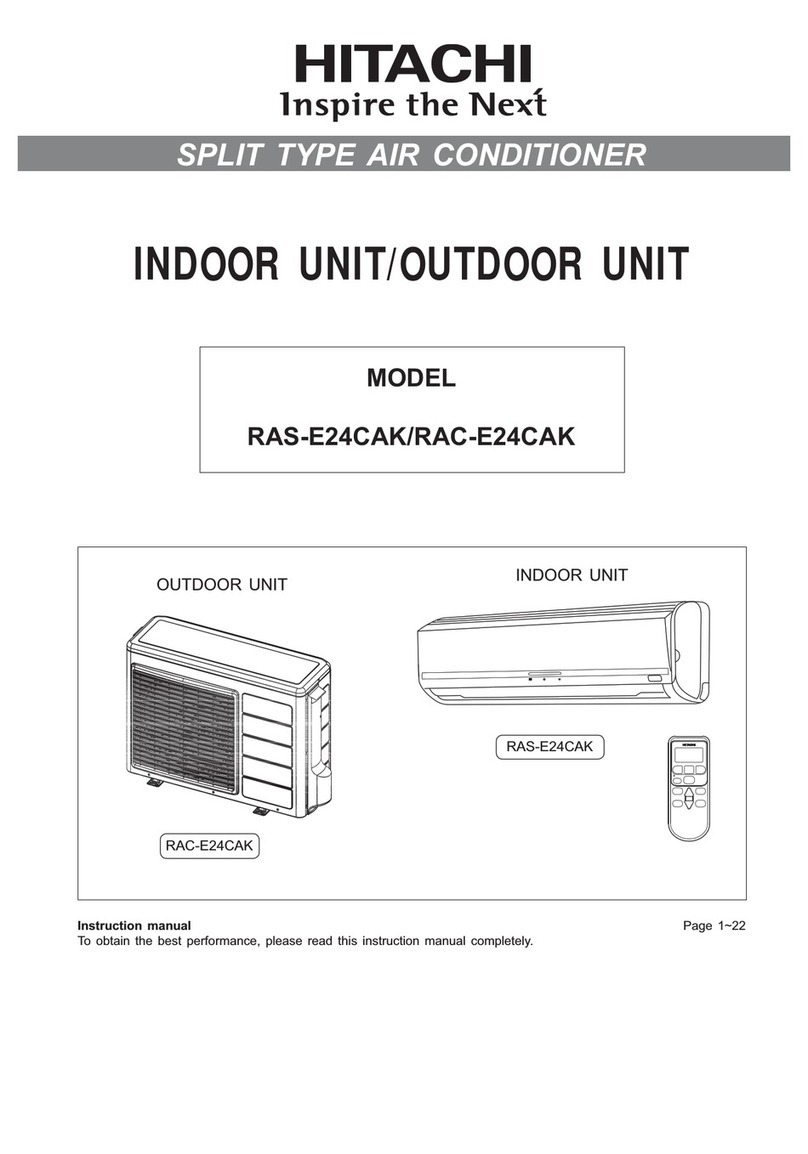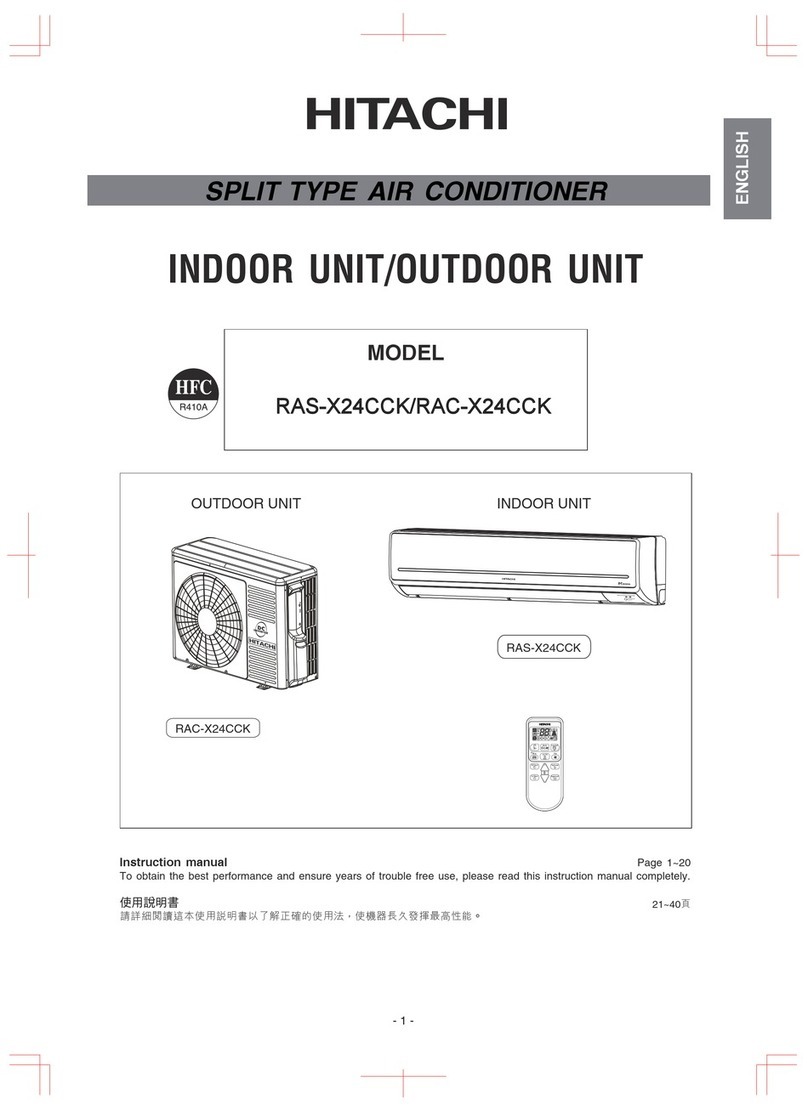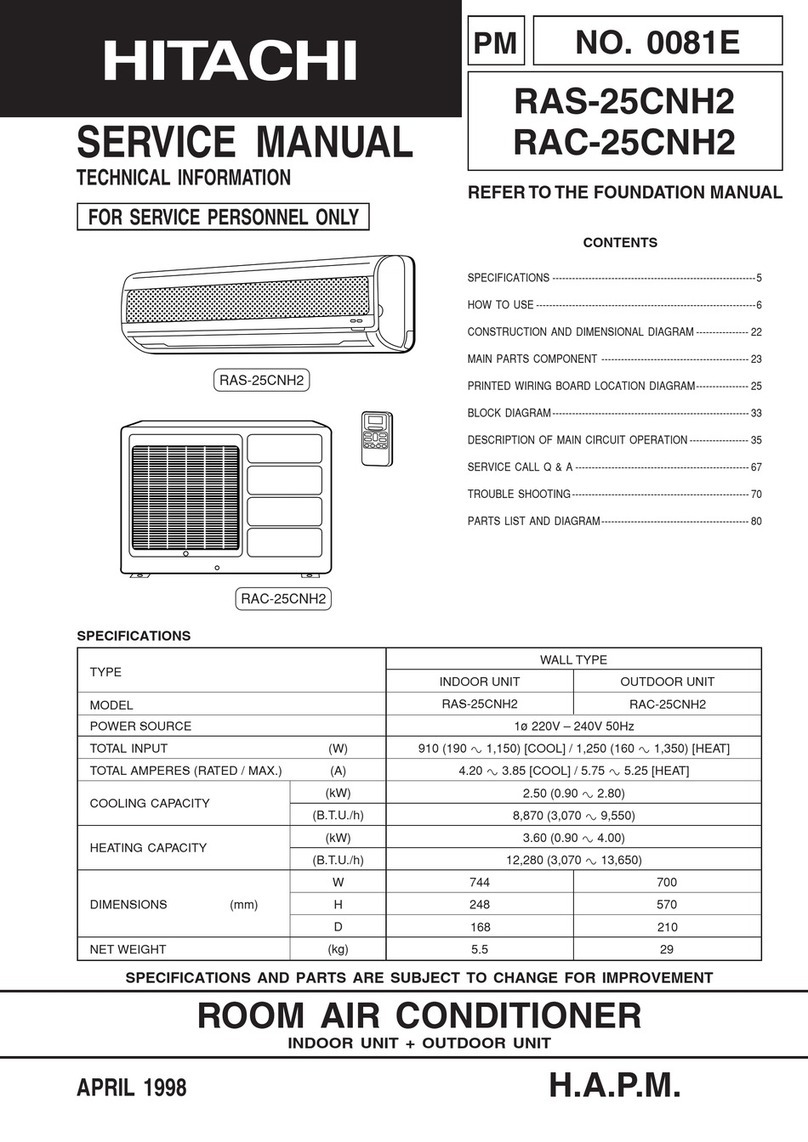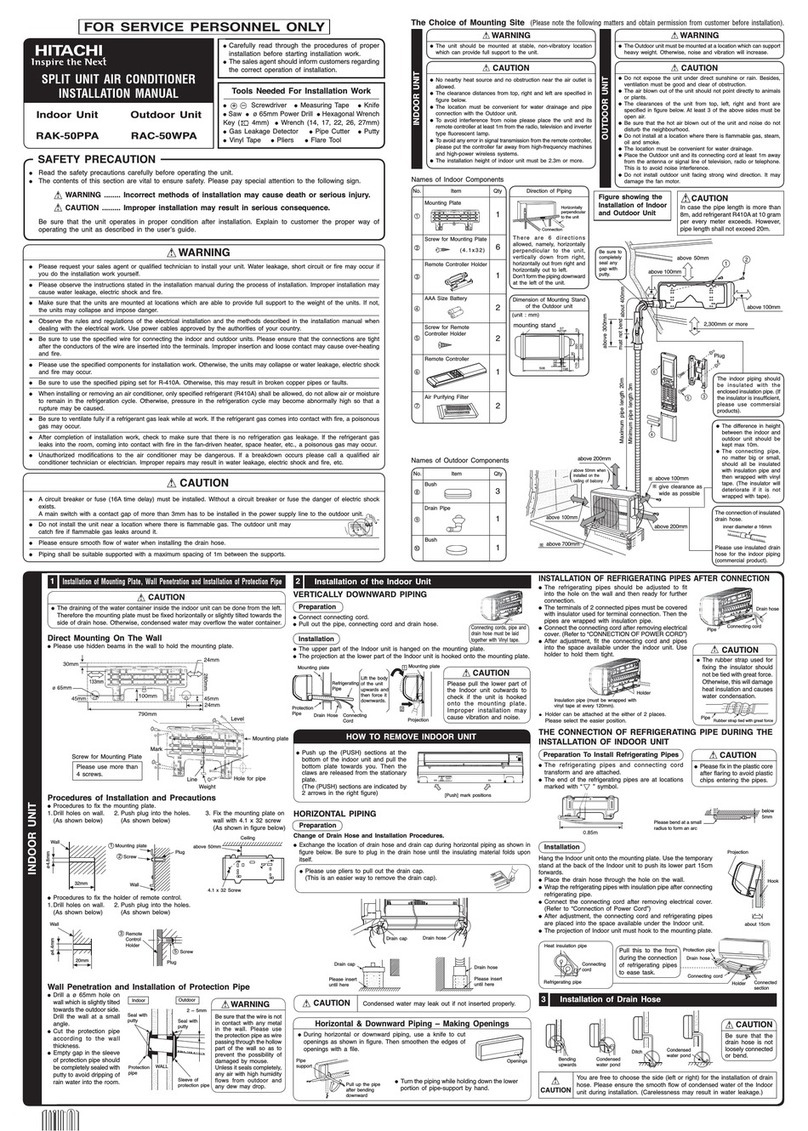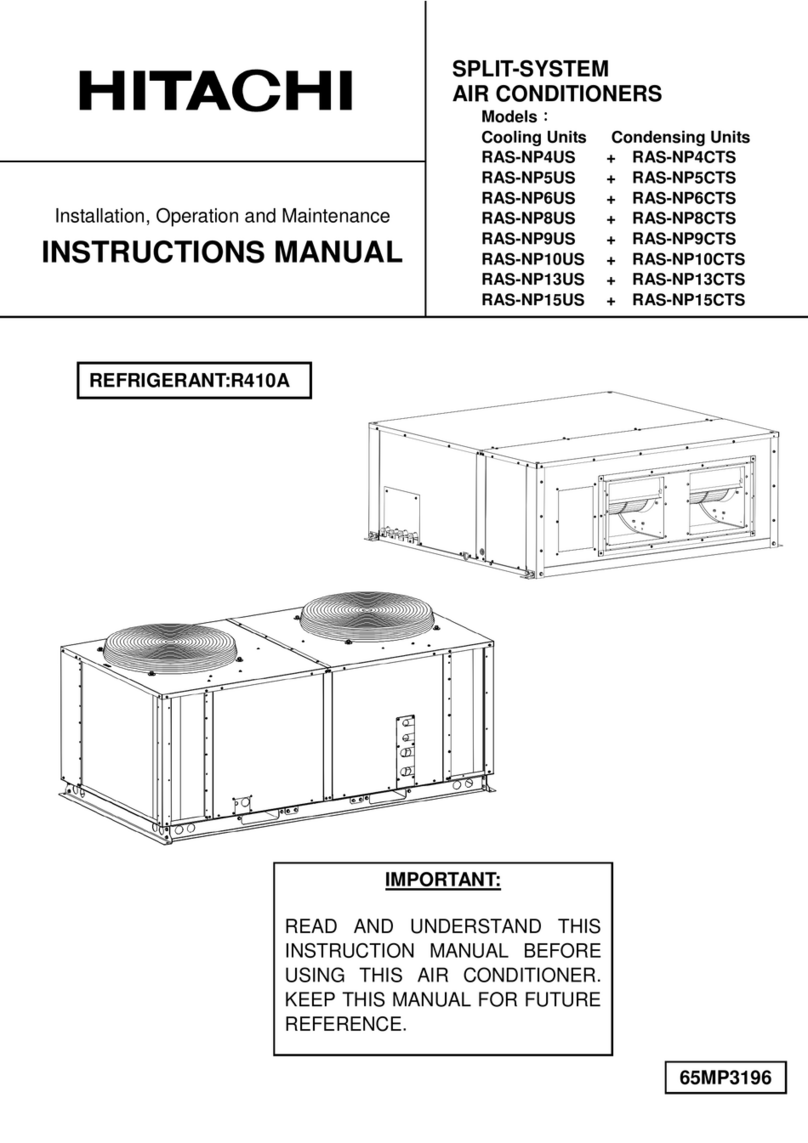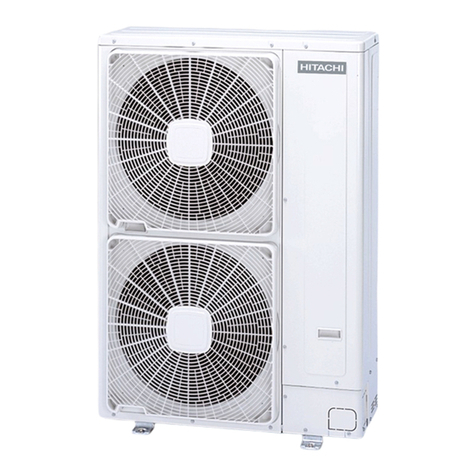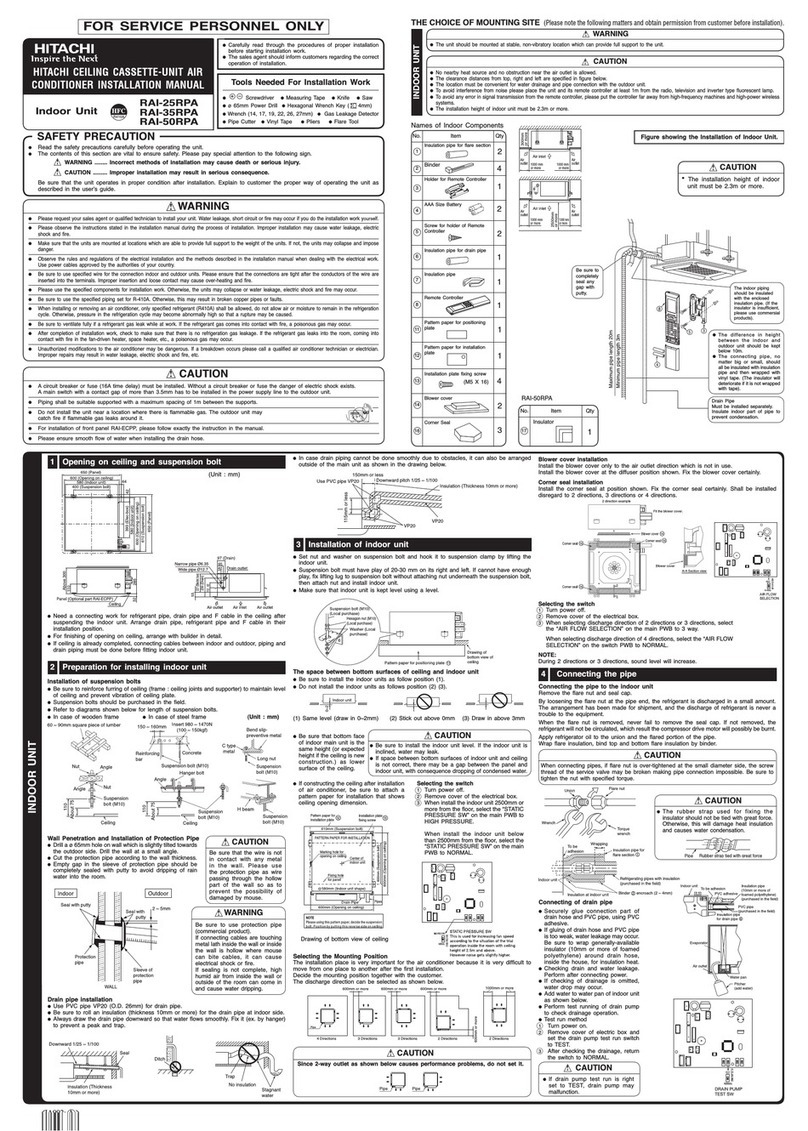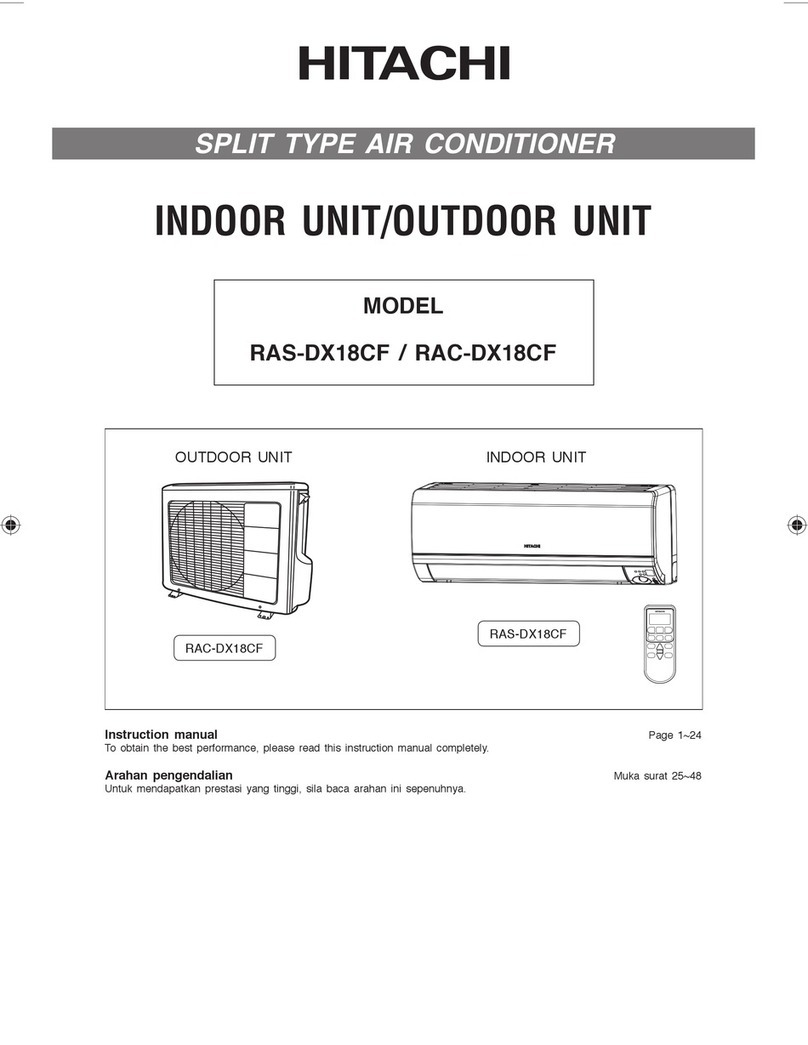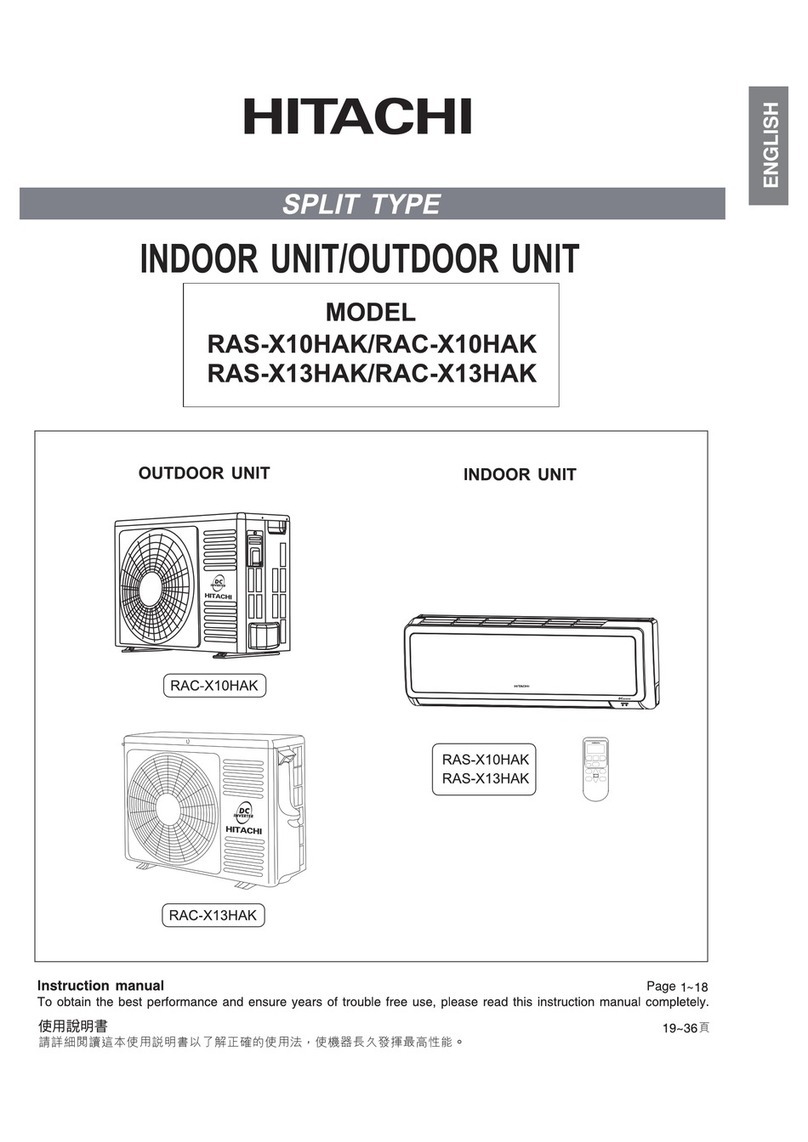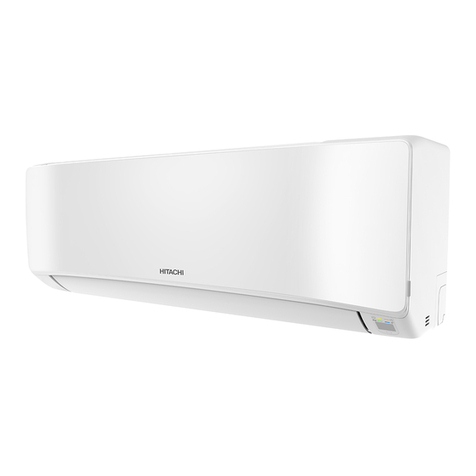
SAFETY PRECAUTION
●Read the safety precautions carefully before operating the unit.
●The contents of this section are vital to ensure safety. Please pay special attention to the following sign.
WARNING ........ Incorrect methods of installation may cause death or serious injury.
CAUTION ......... Improper installation may result in serious consequence.
Make sure to connect earth wire.
This sign in the figures indicates prohibition.
Be sure that the unit operates in proper condition after installation. Explain to customer the proper operation
and maintenance of the unit as described in the user’s guide. Ask a customer to keep this installation manual
together with the instruction manual.
Tools Needed For Installation Work
!
●Carefully read through the procedures of
proper installation before starting installation
work.
●The sales agent should inform customers
regarding the correct operation of installation.
(Mark is exclusive use tool for R32)
●+–Screwdriver ●Measuring Tape
●Knife ●Saw ●ø 65mm Power Drill
●Hexagonal Wrench Key ( 4mm)
●Wrench (14,17,19,22mm)
Gas Leakage Detector ●Pipe Cutter
●Putty ●Vinyl Tape ●Pliers
●Flare Tool Vacuum Pump Adaptor
Manifold Valve Charge Hose
Vacuum Pump
●Please request your sales agent or qualified technician to install your unit. Water leakage,
short circuit or fire may occur if you do the installation work yourself.
●Please observe the instructions stated in the installation manual during the process of
installation. Improper installation may cause water leakage, electric shock and fire.
●Make sure that the units are mounted at locations which are able to provide full support to
the weight of the units. If not, the units may collapse and impose danger.
●Observe the rules and regulations of the electrical installation and the methods described in
the installation manual when dealing with the electrical work. Use cables which are officially
approved in your country. Be sure to use the specified circuit. A short circuit and fire may
occur due to the use of low quality wire or improper work.
●Be sure to use the specified cables for connecting the indoor and outdoor units. Please
ensure that the connections are tight after the conductors of the wire are inserted into the
terminals to prevent the external force is being applied to the connection section of the
terminal base. Improper insertion and loose contact may cause over-heating and fire.
●Please use the specified components for installation work. Otherwise, the units may collapse
or water leakage, electric shock, fire or stronger vibration may occur.
●Be sure to use the specified piping set for R32. Otherwise, this may result in broken copper
pipes or faults.
●When installing or transferring an air conditioner to another location, make sure that air
other than the specified refrigerant(R32) does not enter the refrigeration cycle. If other air
should enter, the pressure level of the refrigeration cycle may increase abnormally which
could result in a rupture and injury.
●Be sure to ventilate fully if a refrigerant gas leak while at work. If the refrigerant gas comes
into contact with fire, a poisonous gas may occur.
●After completion of installation work, check to make sure that there is no refrigeration gas
leakage. If the refrigerant gas leaks into the room, coming into contact with fire in the fan-
driven heater, space heater, etc., a poisonous gas may occur.
●Unauthorized modifications to the air conditioner may be dangerous. If a breakdown occurs
please call a qualified air conditioner technician or electrician. Improper repairs may result
in water leakage, electric shock and fire, etc.
●Be sure to connect the earth line from the power supply wire to the outdoor unit and between
the outdoor and indoor unit. Do not connect the earth line to the gas tube, water pipe, lighting
rod or the earth line of the telephone unit. Improper earthing may cause electric shocks.
●When finishing the refrigerant collection (pumping down), stop the compressor and then
remove the coolant pipe. If you remove the refrigerant pipe while the compressor is operating
and the service valve is released, air is sucked and a pressure in the freezing cycle system
will build up steeply, causing an explosion or injury.
●When installing the unit, be sure to install the refrigerant pipe before starting the compressor.
If the refrigerant pipe is not installed and the compressor is operated with the service
valve released, air is sucked and the pressure level of the refrigeration cycle may increase
abnormally which could result in a rupture and injury.
●The electric cables should neither be reworked nor added. Make sure to use an exclusive
circuit breaker. Otherwise fire or electric shock might occur by connection failure, isolation
failure or over current.
●Make sure to connect cables to terminal properly and terminal cover should close firmly.
Otherwise, over heating at terminal contact, fire or electric shock might occur.
●Make sure that there is no dust on any connected points of electric cables and fix firmly.
Otherwise, fire or electric shock might occur.
CAUTION
!
●A circuit breaker must be installed in the house distribution
box for the direct connected power supply cables to the
outdoor unit. In case of other installations a main switch
with a contact gap or more than 3mm has to be installed.
Without a circuit breaker, the danger of electric shock
exists..
●Do not install the unit near a location where
there is flammable gas. The outdoor unit may
catch fire if flammable gas leaks around it.
●Please ensure smooth flow of water when installing the
drain hose. Improper installing may wet your furniture.
●An IEC approved power cord should be used. Power cord
type: NYM.
WARNING
●The unit should be mounted at stable, non-vibratory location which can provide full support to the unit.
CAUTION
●No nearby heat source and no obstruction near the air outlet is allowed.
●The clearance distances from top, right and left are specified in figure below.
●The location must be convenient for water drainage and pipe connection with the Outdoor unit.
●No nearby leakage risk of flammable gas, and no nearby source of vapor or oil smoke.
●To avoid interference from noise, please place the unit and its remote controller at least 1m from the radio and television.
●To avoid any error in signal transmission from the remote controller, please put the controller far away from high-frequency
machines and high-power wireless systems.
●The installation height should be at least 2300 mm or more from the floor.
●The distance from the air outlet to the fire alarm must be at least 1500mm and there must be no fire alarm in the front
direction of the indoor unit.
The Choice of Mounting Site (Please note the following matters and obtain permission from customer before installation).
WARNING
CAUTION
CAUTION
CAUTION
This symbol shows that this equipment uses a flammable
refrigerant.
If the refrigerant is leaked, together with an external ignition
source, there is a possibility of ignition.
This symbol shows that the Operation Instructions should
be read carefully.
This symbol shows that a service personnel should be
handling this equipment with reference to the Installation
Manual.
This symbol shows that there is information included in
the Operation Manual and/or Installation Manual.
Screw for Hanger
Names of Indoor Components
Screw for Remote
Controller Holder
Remote Controller
AAA size Battery
Hanger
QtyNo. Item
1
6
2
Air purifying filter
Remote Controller
Holder
1
2
3
4
5
6
7
1
2
2
1
Direction of Piping
There are 6 directions
allowed, namely,
backward piping,
backward piping from left,
horizontally piping from
right, horizontally piping
from left, vertically down
from right, vertically down
from left.
Backward piping from left
Connection
above 50mm
about 450mm
2300 or more
Plug
above 100mm
above 100mm
must not bend
about 300mm
Be sure to
completely
seal any gap
with putty.
The indoor piping should be
insulated with the enclosed
insulation pipe. (If the insulator
is insufficient, please use
commercial products.)
Installation of Hanger, Wall Penetration and Installation of Protection Pipe
1
CAUTION
!
●The draining of the water container inside the indoor unit can be done from the left. Therefore the hanger
must be fixed horizontally or slightly tilted towards the side of drain hose. Otherwise, condensed water
may overflow the water container.
Direct Mounting On The Wall
●Please use hidden beams in the wall to hold the hanger.
Wall Penetration and Installation of Protection Pipe
●Drill a ø 65mm hole on wall which
is slightly tilted towards the outdoor
side. Drill the wall at a small angle.
●Cut the protection pipe according
to the wall thickness.
●Empty gap in the sleeve of protection
pipe should be completely sealed
with putty to avoid dripping of rain
water into the room.
●Please ensure smooth flow of water
when installing the drain hose.
Improper installing may wet your
furniture.
●An IEC approved power cord should
be used. Power cord type: NYM.
Be sure that the wire is not
in contact with any metal
in the wall. Please use
the protection pipe as wire
passing through the hollow
part of the wall so as to
prevent the possibility of
damaged by mouse.
Unless it seals completely,
any air with high humidity
flows from outdoor and dew
may drop.
WARNING
INDOOR UNIT
Procedures of Installation and Precautions
●Procedures to fix the hanger.
1. Drill holes on wall. 2. Push plug into the holes. 3. Fix the hanger on wall
(As shown below) (As shown below) with 4.1 x 32 screw
(As shown in figure below)
Figure showing the Installation of Indoor Unit.
42.5mm
660mm
195mm
115mm
195mm
15mm
65
155mm
36mm
1050mm
85mm
294mm
Drain Hose
Level
Line Weight
Wall
Wall hole
Screw for Hanger
Hanger Screw the hanger at the positions
possibly near the upper and lower
hooks where the indoor unit is
hung. Use 4 or more screws to
fix the hanger.
32mm
ø4.8mm
1
2
Hanger
Wall
Plug
(Procure
locally)
Ceiling
Screw
Indoor Outdoor
2-5mm
Seal with
putty
Sleeve of
protection pipe
Protection
pipe
Seal with
putty
WALL
Installation of the Indoor Unit
2
Cutting Low Cover bush
1PIPING FROM THE RIGHT SIDE (BACKWARD, DOWNWARD, HORIZONTAL)
●While installing the pipe from the right, left or bottom
side, use a knife to cut openings as shown in figure.
Then smoothen the edges of openings with a file.
Openings
Openings
Preparation
●Connect connecting cord.
●Pull out the pipe, connecting cord and drain hose. Connecting cords, pipe
and drain hose must
be laid together with
Vinyl tape.
Installation
●Insert the pipe through the wall hole.
1 The upper part of the Indoor unit is hanged on the hanger.
2 The projection at the lower part of the Indoor unit is hooked
onto the hanger
Wall hole
Pipe
Drain hose
Drain layout of backward piping
Cable
Hanger
Refrigerating
pipe
Lift the body of
the unit upwards
and then force it
downwards.
Protection Pipe
Drain Hose
Drain HoseDrain cap
Connecting Cord
Hanger
Projection
2PIPING FROM THE LEFT SIDE (BACKWARD, DOWNWARD, HORIZONTAL)
Preparation
Changed of Drain Hose and Installation Procedures
●Exchange the location of drain hose and drain cap while installing the pipe from the left side as shown in below.
Be sure to plug in the drain hose until the insulating material folds upon itself.
●Please use pliers to pull out the drain cap.
(This is an easier way to remove the drain
cap).
●The rubber strap used for fixing the insulator should not be tied with great force.
Otherwise, this will damage heat insulation and causes water condensation..
●Please pull the lower part of the indoor unit outwards to check if the unit is hooked
onto the hanger. Improper installation may cause vibration and noise.
●Transform the piping while holding down the lower portion of pipe-support by
hand.
●Push the pipe deeply until the insulating section
of the drain hose end gets over the rib at the
indoor unit side.
●Remove low cover.
●Insert drain cap up to the location securely till the cap stops.
Insufficient insert may result in water leakage.
CAUTION
Pipe
Pipe support
Rubber strap tied
with great force
Transform after
bending downward
11
2
1
CAUTION
Drain hole
INSTALLATION
MANUAL
SPLIT UNIT AIR CONDITIONER
INDOOR UNIT
RAK-VH18PHASV
RAK-VH24PHASV
EN INSTRUCTION MANUAL
FOR SERVICE
PERSONNEL ONLY
!
!





